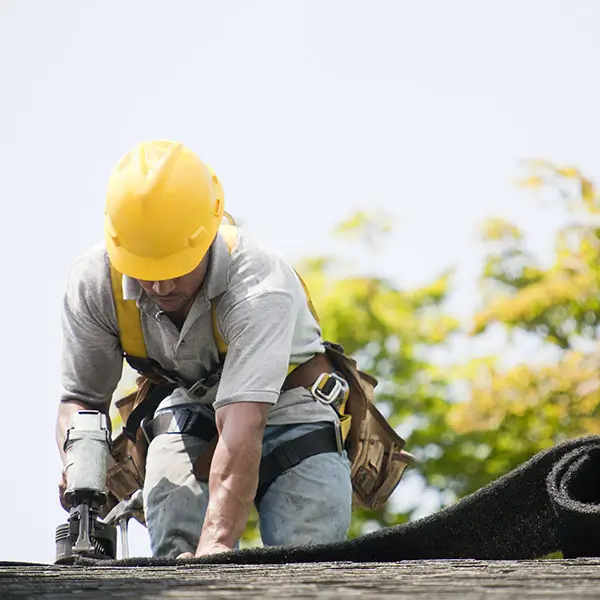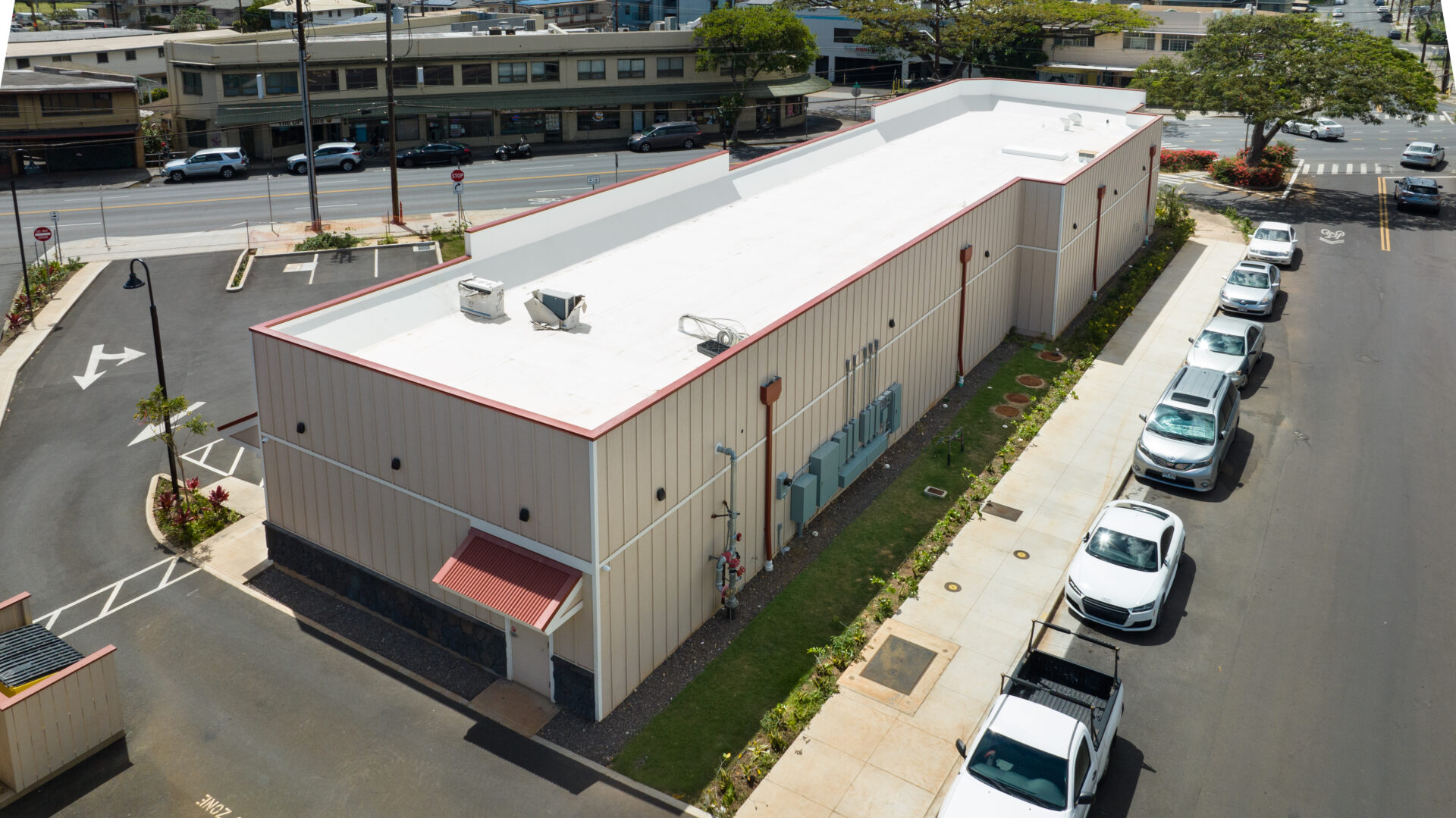Builders often choose high-quality roofing materials hawaii for reliability.
Wiki Article
Reveal Typical Roof Covering Troubles and Exactly How to Address Them Efficiently
When it comes to your roof covering, spotting troubles early can save you time and cash. You may discover water discolorations on your ceiling or fractured roof shingles throughout your routine checks. Ignoring these indicators can result in larger problems down the line. Understanding how to identify and resolve these typical roofing problems is crucial for maintaining your home's honesty. What particular actions should you take to assure your roofing system remains in leading problem?Determining Roofing Leaks and Their Causes

Next, analyze your roofing system from the exterior. Seek missing out on or broken floor tiles, rusted flashing, or harmed seamless gutters. Take notice of areas around smokeshafts, vents, and skylights, as these are usual leakage sources. If you detect any of these problems, it's important to resolve them immediately.
Throughout hefty rain, observe your roofing system for any pooling water or drips. This can disclose leaks that may not show up during dry problems. By staying attentive and regularly inspecting your roof, you can catch leaks early and safeguard your home from more damage.
Taking care of Missing Out On or Harmed Shingles
When you discover missing out on or harmed tiles, it's essential to act swiftly to stop further problems. You'll desire to identify the level of the damages, repair any missing out on tiles, and consider precautionary upkeep ideas to keep your roof in top shape. Taking these steps can save you money and time down the road.Recognizing Shingle Damage
Although roof shingles are made to withstand the elements, they can still endure damages with time, leading to potential leakages and expensive repair services. To recognize tile damages, start by inspecting your roofing system for missing out on, split, or curled roof shingles. Search for indications of discoloration or granule loss, which can indicate degeneration. Focus on any areas where roof shingles are lifting or bending, as these can create susceptabilities. It's additionally smart to check for water stains or mold on your ceilings and walls, as these might signal leaks originating from damaged roof shingles. Consistently monitoring your roofing system, particularly after severe weather, can help you capture concerns early and maintain the stability of your home.Fixing Missing Shingles
After identifying tile damages, the following action is attending to any missing or damaged shingles without delay to avoid more problems. Beginning by examining the affected location and determining the amount of roof shingles need replacement. If you can, climb onto your roofing safely, wearing appropriate equipment. Eliminate any damaged roof shingles very carefully using a lever. When you have actually gotten rid of the location, slide in the brand-new shingles, guaranteeing they line up with the existing ones. Protect them with roof covering nails and use roof covering adhesive for added security. Don't fail to remember to secure the sides to avoid water infiltration. If you're unpleasant with the repair work, it's important to call an expert. Taking action swiftly will help keep your roof covering's stability and extend its lifespan.
Preventive Maintenance Tips
Exactly how can you keep your roofing system in leading form and avoid shingles from going missing out on or getting damaged? Inspect your roof covering at the very least twice a year and after severe weather (roofing honolulu hi).Maintain rain gutters tidy and without particles to ensure correct water flow and prevent tile damage. Trim looming branches to lessen the threat of them scraping against your roof during tornados.
Think about applying a safety sealer to expand your roof shingles' lifespan. Finally, if you notice any concerns, address them promptly to prevent pricey repairs later. Taking these precautionary procedures can save you money and time while guaranteeing your roof covering stays durable and dependable.
Understanding Roofing Ventilation Issues
Appropriate roofing ventilation is essential for maintaining the long life and effectiveness of your roof, as it aids manage temperature and moisture levels in your attic. Without adequate ventilation, you may deal with issues like extreme heat build-up, leading to premature shingle deterioration, or boosted humidity that can create mold and mildew growth and timber rot.To evaluate your roofing air flow, look for signs of getting too hot, such as deformed roof shingles or a hot attic room. Try to find obstructed vents, which can restrict air movement and trap warm. You should assure your consumption and exhaust vents are well balanced, permitting proper air exchange.
If you think air flow issues, consider setting up added vents or updating existing ones. Ridge vents, soffit vents, and gable vents can all improve air flow. Resolving these problems immediately can secure your roofing system and conserve you from costly fixings down the line. Stay positive in maintaining your roof's air flow to secure your home.
Addressing Roofing System Moss and Algae Development
While you may value the natural appearance of moss and algae on your roof, these organisms can lead to considerable problems if left untreated. Use a soft-bristle brush to delicately scrub away the moss and algae, being cautious not to damage your roof shingles.Next, consider using a specialized roofing cleaner or a blend of water and bleach to eliminate staying spores. Rinse extensively to stop any kind of chemical damages. Furthermore, install zinc or copper strips along the ridge of your roofing. As rain washes over these steels, it develops a protective barrier against future growth. Regular evaluations and maintenance will certainly aid stop moss and algae from returning, ensuring your roofing system stays healthy for several years ahead.
Repairing Tornado Damages and Wind Issues
After a tornado, it's essential to analyze your roof covering for damages caused by high winds and hefty rain. Start by inspecting for missing out on or damaged tiles, as these are typical casualties.Search for any kind of drooping locations, which could indicate water accumulation or structural problems. If you discover any type of debris, like branches or leaves, remove them very carefully to stay clear of additional damages. If your rain gutters are clogged, clear them to ensure appropriate drain.

For small fixings, you could manage it on your own, but don't hesitate to call an expert for considerable damages. Keep in mind, acting promptly can save you from bigger issues down the line, so take that assessment seriously and address any kind of problems immediately.
Identifying Signs of Architectural Damage
Just how can you tell if your roofing is dealing with architectural damages? Beginning by trying to find noticeable sagging or dips in your roofline. These indications show that the underlying structure may be jeopardized. Next, look for splits or voids in the wall surfaces or ceiling, as these can signify shifting or clearing up as a result of roof covering concerns. Focus on leakages or water spots, particularly in locations where the roof covering meets wall surfaces. If you see missing out on or damaged roof shingles, it's important to resolve them promptly, as they can reveal your roof covering to more damages. Also, inspect your attic room for any kind of indications of daytime peeking via, which can indicate your roofing's stability is at danger. Lastly, listen for unusual creaking or standing out audios, as they might show architectural tension. If you notice any one of these indications, it's time to speak with a roof covering expert for a thorough analysis.Regular Upkeep Tips for Long Life

Routine Evaluations Value
Considering that a roofing is your home's initial line of protection versus the aspects, routine evaluations are necessary for keeping its honesty (roofing contractors oahu). You need to examine your roofing a minimum of two times a year, ideally in springtime and loss, to catch prospective issues early. Search for missing or harmed shingles, signs of leaks, and any kind of particles that might cause troubles. Pay close interest to areas around chimneys, vents, and blinking, as these prevail weak spots. If you see anything uncommon, do not hesitate to speak to a professional for a detailed evaluation. Keeping up with these inspections can avoid costly repair services down the line and prolong your roofing system's life-span, ensuring your home continues to be safe for years to find.Correct Gutter Maintenance
Normal roof covering inspections naturally bring about the value of appropriate gutter maintenance. Tidy your gutters at the very least two times a year to stop blockages from leaves, dirt, and debris. If you reside in a tree-heavy location, take into consideration examining them much more usually. Make use of a strong ladder and use gloves while getting rid of the accumulation. Likewise, evaluate your gutters for leakages or corrosion; they can create water damages to your roofing system and home. See to it downspouts straight water away from your foundation to avoid flooding. Setting up rain gutter guards can reduce particles accumulation and reduce maintenance time. Lastly, check for appropriate incline; gutters need to slope toward the downspouts to assure suitable drain. By following these pointers, you'll extend your rain gutters' life-span and protect your roofing.Often Asked Questions
Just How Can I Choose the Right Roofing Product for My Home?
To choose the appropriate roof product for your home, think about climate, resilience, and aesthetic appeals. Research choices like asphalt tiles, metal, or tile. Think of maintenance demands and budget plan to locate what fits you ideal.What Are the Indications I Need a Roofing System Replacement Instead of Fixing?
If you notice extensive leaks, sagging, or missing out on tiles, you may require a roof replacement. If your roofing's nearing its life-span or has significant damage, it's time to ponder a full replacement rather of just repair services.Just how Usually Should I Schedule Professional Roofing Evaluations?
You need to set up professional roof covering inspections a minimum of annually, preferably in springtime or autumn. This helps capture prospective issues early, ensuring your roofing remains in great problem and extending its life-span.Can I Mount a New Roof Covering Over My Old One?
You can install a new roof over your old one, but it's vital to inspect neighborhood building codes and guarantee the existing roof's problem is audio. This strategy can conserve time and cash, yet think about prospective problems.What Is the Average Lifespan of Different Roofing Products?
The standard life expectancy varies by material: asphalt shingles last 15-30 years, steel roof coverings can last 40-70 years, while floor tile or slate roofings may exceed 50 years. Pick sensibly based on your climate and spending plan.Verdict
By staying alert and dealing with typical roofing problems immediately, you can safeguard your home and expand your roofing system's life expectancy. With a little regular maintenance, you'll not just secure your financial investment but additionally enjoy peace of mind recognizing your roofing is in leading form.Report this wiki page